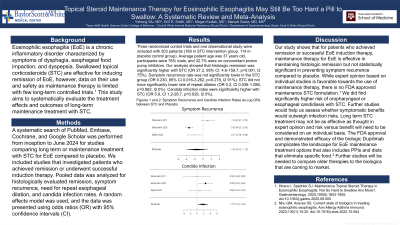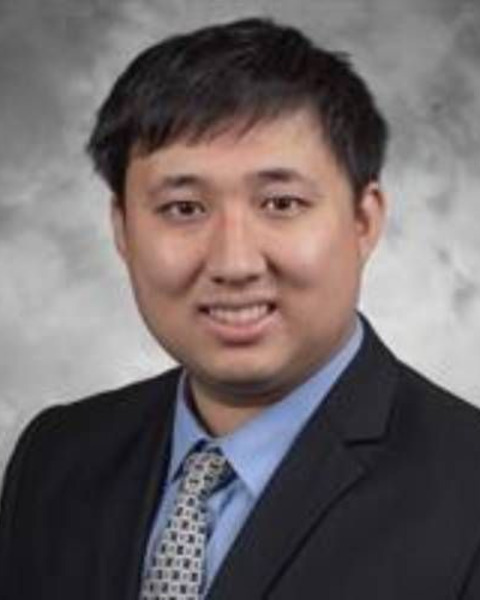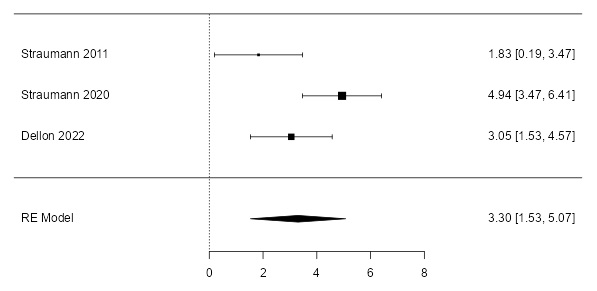Tuesday Poster Session
Category: Esophagus
P3932 - Topical Steroid Maintenance Therapy for Eosinophilic Esophagitis May Still Be Too Hard a Pill to Swallow: A Systematic Review and Meta-Analysis
Tuesday, October 29, 2024
10:30 AM - 4:00 PM ET
Location: Exhibit Hall E

Has Audio

Yizhong Wu, MD
Baylor Scott & White Medical Center
Georgetown, TX
Presenting Author(s)
Yizhong Wu, MD1, Eric Smith, MD2, Megan Kudlak, MD2, Manuel Garza, MD, MS2
1Baylor Scott & White Medical Center, Georgetown, TX; 2Baylor Scott & White Medical Center, Round Rock, TX
Introduction: Eosinophilic esophagitis (EoE) is a chronic inflammatory disorder characterized by symptoms of dysphagia, esophageal food impaction, and dyspepsia. Swallowed topical corticosteroids (STC) are effective for inducing remission of EoE, however, data on their use and safety as maintenance therapy is limited. This study aims to systematically evaluate the treatment effects and outcomes of long term maintenance treatment with STC.
Methods: A systematic search of PubMed, Embase, Cochrane, and Google Scholar was performed from inception to June 2024 for studies comparing long term or maintenance treatment with STC for EoE compared to placebo. We included studies that investigated patients who achieved remission or underwent successful induction therapy. Pooled data was analyzed for histologically evaluated remission, symptom recurrence, need for repeat esophageal dilation, and candida infection rates. A random effects model was used and the data was presented using odds ratios (OR) with 95% confidence intervals (CI).
Results: Three randomized control trials and one observational study were included with 303 patients (189 in STC intervention group, 114 in placebo control group). Average patient age was 37 years old, participants were 78% male, and 32.7% were on concomitant proton pump inhibitors. Our analysis showed that histologic remission was significantly higher with STC (OR 27.2, 95% CI: 4.6-159.7, p< 0.001, I2 75%). Symptom recurrence rate was not significantly lower in the STC group (OR 0.230, 95% CI 0.016-3.262, p=0.278, I2 91%). STC did not have significantly lower rate of repeat dilation (OR 0.2, CI 0.036-1.086, p=0.062, I2 0%). Candida infection rates were significantly higher with STC (OR 5.9, CI 1.2-28.7, p=0.029, I2 0%).
Discussion: Our study shows that for patients who achieved remission or successful EoE induction therapy, maintenance therapy for EoE is effective in maintaining histologic remission but not statistically significant in preventing symptom recurrence compared to placebo. While expert opinion based on individual studies supports the use of maintenance therapy, there is no FDA approved maintenance STC formulation. We did find significantly higher risk of oropharyngeal or esophageal candidiasis with STC. Further studies would help us assess whether symptomatic benefits would outweigh infection risks. Long term STC treatment may not be as effective as thought in expert opinion and risk versus benefit will need to be considered on an individual basis.

Disclosures:
Yizhong Wu, MD1, Eric Smith, MD2, Megan Kudlak, MD2, Manuel Garza, MD, MS2. P3932 - Topical Steroid Maintenance Therapy for Eosinophilic Esophagitis May Still Be Too Hard a Pill to Swallow: A Systematic Review and Meta-Analysis, ACG 2024 Annual Scientific Meeting Abstracts. Philadelphia, PA: American College of Gastroenterology.
1Baylor Scott & White Medical Center, Georgetown, TX; 2Baylor Scott & White Medical Center, Round Rock, TX
Introduction: Eosinophilic esophagitis (EoE) is a chronic inflammatory disorder characterized by symptoms of dysphagia, esophageal food impaction, and dyspepsia. Swallowed topical corticosteroids (STC) are effective for inducing remission of EoE, however, data on their use and safety as maintenance therapy is limited. This study aims to systematically evaluate the treatment effects and outcomes of long term maintenance treatment with STC.
Methods: A systematic search of PubMed, Embase, Cochrane, and Google Scholar was performed from inception to June 2024 for studies comparing long term or maintenance treatment with STC for EoE compared to placebo. We included studies that investigated patients who achieved remission or underwent successful induction therapy. Pooled data was analyzed for histologically evaluated remission, symptom recurrence, need for repeat esophageal dilation, and candida infection rates. A random effects model was used and the data was presented using odds ratios (OR) with 95% confidence intervals (CI).
Results: Three randomized control trials and one observational study were included with 303 patients (189 in STC intervention group, 114 in placebo control group). Average patient age was 37 years old, participants were 78% male, and 32.7% were on concomitant proton pump inhibitors. Our analysis showed that histologic remission was significantly higher with STC (OR 27.2, 95% CI: 4.6-159.7, p< 0.001, I2 75%). Symptom recurrence rate was not significantly lower in the STC group (OR 0.230, 95% CI 0.016-3.262, p=0.278, I2 91%). STC did not have significantly lower rate of repeat dilation (OR 0.2, CI 0.036-1.086, p=0.062, I2 0%). Candida infection rates were significantly higher with STC (OR 5.9, CI 1.2-28.7, p=0.029, I2 0%).
Discussion: Our study shows that for patients who achieved remission or successful EoE induction therapy, maintenance therapy for EoE is effective in maintaining histologic remission but not statistically significant in preventing symptom recurrence compared to placebo. While expert opinion based on individual studies supports the use of maintenance therapy, there is no FDA approved maintenance STC formulation. We did find significantly higher risk of oropharyngeal or esophageal candidiasis with STC. Further studies would help us assess whether symptomatic benefits would outweigh infection risks. Long term STC treatment may not be as effective as thought in expert opinion and risk versus benefit will need to be considered on an individual basis.

Figure: Figure 1: Histologic Remission Rate as Log Odds Ratios between STC and Placebo Groups
Disclosures:
Yizhong Wu indicated no relevant financial relationships.
Eric Smith indicated no relevant financial relationships.
Megan Kudlak indicated no relevant financial relationships.
Manuel Garza indicated no relevant financial relationships.
Yizhong Wu, MD1, Eric Smith, MD2, Megan Kudlak, MD2, Manuel Garza, MD, MS2. P3932 - Topical Steroid Maintenance Therapy for Eosinophilic Esophagitis May Still Be Too Hard a Pill to Swallow: A Systematic Review and Meta-Analysis, ACG 2024 Annual Scientific Meeting Abstracts. Philadelphia, PA: American College of Gastroenterology.
